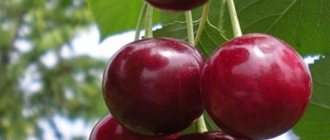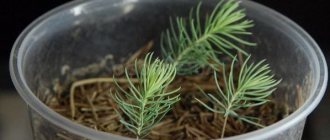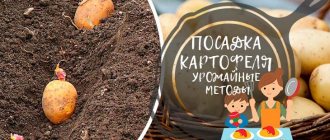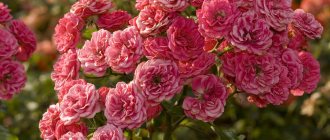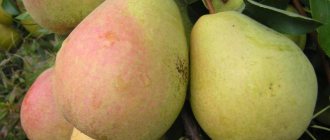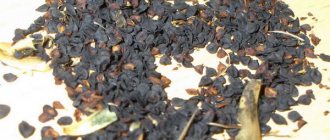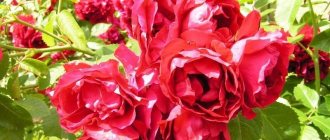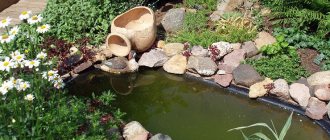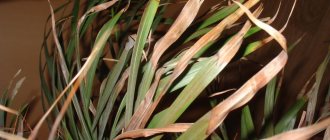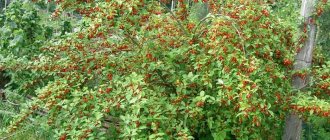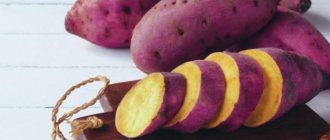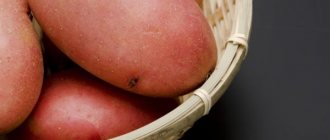Where and how are persimmons grown?
Persimmon is an exotic evergreen or deciduous shrub that belongs to the genus of tropical and subtropical trees from the Ebony family. With proper care, these crops can live up to 500 years, producing edible large fruits and delighting with a beautiful crown of leaves throughout the year.
Persimmon is a small tree or shrub with simple and alternate leaves of a rich green hue. The fruits are produced by the crop in the fall; they are fleshy berries that contain up to 10 seeds. They have a tart, astringent taste that can be removed by freezing.
Many gardeners are faced with the question, where do persimmons grow? In nature, trees of this genus are distributed in the northern and southern tropical zones and mainly grow in the Indomalayan region. Cultivated forms of persimmon are also grown in China, and fruiting crops grow in various Eurasian countries, as well as in Australia and America.
persimmon tree
This widespread distribution suggests that persimmons are grown mainly in regions with warm climatic conditions. Therefore, if a gardener is interested in planting this fruit tree, then he must create suitable conditions for it that will simulate a tropical climate. Otherwise, the tree will not bear fruit.
Currently, a huge number of persimmon varieties have been bred - more than 200, including both traditional and exotic. The most common in our southern regions include:
- Russian.
- Mid.
- Caucasian.
- Virginskaya.
- Eastern.
- Nikitskaya Bardovaya.
- Persimmon king.
1. Russian
2. Mid
3. Caucasian
4. Virginskaya
5. Eastern
6. Nikitskaya Bardovaya
7. Kinglet
All of them differ from each other not only in the method of cultivation, but also in the shape, taste and color of the fruit. For example, Rossiyanka persimmon has good frost resistance, so it is recommended for planting in the middle zone. This variety tolerates temperatures down to minus 30 degrees, so it can produce viable fruits even in open ground in the country.
But how do persimmons grow? This fruiting shrub grows well in moist soils. Flowering occurs in early summer, around June, but this occurs only 4-5 years after planting. Some persimmon varieties are monoecious, while others are dioecious, so this is important to consider when purchasing planting material.
Persimmon produces a harvest if all the rules of care and sufficient temperature are observed.
Persimmon blossom
The denser the fruits grow, the smaller they will be.
The fruits should be located on the shoots at a distance of about 10 cm from each other. Only in this case will they take on a beautiful marketable appearance. When branches are overloaded, they become small, less tasty, and the tree quickly becomes depleted.
What are the benefits of persimmon
The fruit contains vitamins A and C, group B, as well as a number of valuable microelements: potassium and magnesium, manganese and phosphorus. Regular consumption of persimmons brings health benefits:
- reduces the risk of thyroid diseases and atherosclerosis;
- prevents iron deficiency anemia and vitamin deficiency;
- improves the functioning of the gastrointestinal tract;
- relieves swelling due to its diuretic effect.
Growing persimmons in the country is an opportunity to obtain healthy fruits in sufficient quantities. By studying the basic rules and techniques of agricultural technology and listening to the recommendations of experienced gardeners, you can get an enviable harvest every year. With proper care, the tree will gratefully bear fruit for decades.
More information about the correct dosage, timing and methods of applying the fertilizers listed above can be found in other articles on the site.
Reproduction methods
Many summer residents are faced with the question of how to grow persimmons. There are several ways to propagate this crop; they differ in complexity and technology. The most common ones include:
- Seed propagation. The seeds quickly lose their viability, so they need to be planted immediately after being separated from the pulp. This method is much more difficult to implement, since it is important to choose varieties that do not require pollination. For planting, use pots filled with moistened turf soil mixed with sand. Germination lasts about three months, during which time the pots should be kept in a cool, dark place. When sprouts appear, they are taken out into the heat (15-20 degrees). After growing several leaves on the shoots, the seedling can be planted in a permanent place of growth.
- Vaccination. For this method of propagation, cuttings should be prepared in advance before the release of juice and stored at a low temperature until grafting begins. You can graft in any traditional way - by the bark, in a split or in a side cut. Afterwards, you should tie the cutting tightly, and break it off when growth appears. When the cutting grows with the scion, the binding is removed. In spring or autumn, the seedling in the garden is transplanted to a permanent place of growth.
Propagation by seeds
But planting material of frost-resistant varieties (for example, Rossiyanka, Virginskaya, Vostochnaya) can be selected in the nursery. They take root better in open ground because they are acclimatized to growing conditions. This method of planting is easier to implement.
You should approach the process of selecting seedlings especially carefully; for this you need to contact only the manufacturers. In this case, you can be sure that the crop matches the selected variety. If you buy the wrong planting material, which is less frost-resistant, the plant may die.
Propagation by cuttings
Seedlings with an open root system should be purchased in the fall. It is important to pay attention to the roots; they should be well branched and thin. They are very sensitive to drying and sunlight, as well as to strong soil moisture. If there are dead fibrous roots, but healthy taproots, the seedlings will be suitable for planting.
Collection, use and storage of crops
An adult Rossiyanka tree produces an average of 50–60 kg of fruit, and in particularly successful years – up to 80 kg. It produces its first full harvest at the age of 5–6 years. The fruits fully ripen at the end of November, when the tree has already shed its leaves. The harvest is harvested exclusively by hand, as if unscrewing the stalk.
Persimmon, when the leaves have already fallen from the tree, but the fruits are still hanging, looks very unusual
Technical ripeness occurs in October. Persimmons harvested at this stage are left to ripen in a dark, warm place with high humidity and good ventilation. The process will go faster if you put ripe apples and bananas nearby.
Even under optimal conditions, persimmons are not stored for long, a maximum of a month. She needs a temperature of no more than 15°C and high humidity.
After freezing, persimmons do not lose their taste and benefits, but they will require a lot of space to store them.
In addition to eating fresh, persimmons are frozen and dried. But storing frozen fruits will require a lot of space. It is also quite suitable for homemade preparations - compotes, preserves, jams, candied fruits.
Many people haven’t even tried persimmon jam, but it’s very tasty!
Growing in open ground
Growing fruit-bearing shrubs in the country requires the correct choice of a place for its constant growth:
- The best soil for all varieties (including Rossiyanka, Virginskaya, Vostochnaya) is sandy loam and loamy soil. They should be quite fertile, and the depth of groundwater should be about 1 meter, since the root system of the tree is located at a distance of 50 cm.
- The place where further cultivation will take place must be protected from strong winter winds.
- The plant is light-loving, so it is best to grow it in warm and sunny areas. In the shade, the leaves of the plant become deformed, the fruits fall off the shoots, and the branches acquire symptoms of etiolation.
Fruiting persimmon will grow well in northern latitudes if it is grown in a wall formation. To do this, it needs to be planted on the south side of the heated house. But the wall itself should not be warm, as this has an adverse effect on the seedlings.
The seedling should be planted on the south side of the house
In regions with a warm climate, seedlings can be planted until early November, but in early autumn the root system of the planting material takes root better. In northern regions, it is important to do this as early as possible; in cold climates, the procedure should be postponed until spring.
You must first prepare a planting hole, inside which you need to install a support stake. When planting a seedling, you should carefully straighten its roots and then press it firmly with fertile soil. Additionally, compact the soil; immediately after transplanting the seedling, its trunk must be hilled.
You need to drive a stake into the planting hole
Growing next year will be successful, and the seedling will survive the winter if it is covered with a special box and insulating material when frost sets in.
In subsequent years, it will be necessary to insulate the trunk and skeletal shoots, and cover the plant with a reflective box.
In the southern regions, to prepare for winter, it is enough to whiten the trunk with lime, and mulch the circle of earth near the trunk with any material available at the dacha. If all the rules of care are followed, the tree begins to bear fruit only for 3-4 years. At the same time, a variety such as Nikitskaya Burgundy is particularly fast-growing.
HOW TO PLANT - DETAILED INSTRUCTIONS
The persimmon planting season is spring and autumn. Autumn seedlings take root better, but they need to be planted long before the first cold weather. At least 2 months in advance.
Choosing a location is another important aspect that should not be forgotten. Persimmon prefers to grow in open sunny areas. The plant does not like wind and drafts, so plant it near the walls of the house or high fences. The tree will grow best in loamy, well-drained soil.
How to plant persimmons:
- Prepare the pit in advance - 14 days in advance. It is important that it is of sufficient size (40-50 l).
- Start creating drainage: place pebbles or crushed bricks at the bottom of the hole. You can also use sand for this purpose.
- The drainage layer is covered with a layer of humus mixed with the soil that you dug when creating the hole. The layer should be formed in the form of a mound or hill - this is very important.
- Dip a persimmon seedling with its roots into any preparation for root formation. Keep it like this for at least 24 hours.
- Plant the plant in such a way as to spread the roots over the mound of humus. Place the persimmon hole shallowly - to cover the root collar by 5-7 centimeters.
- Refrain from compacting so as not to harm the roots.
- Place a peg next to the seedling that will support it and secure them together.
- Cover the planting site with mulch and water well - spend at least 20 liters of water.
It is necessary to ensure that the soil near the seedling always remains moist.
Important: place the seedling on a hill if you want to protect it from damage that may occur due to melt water.
Care and protection from diseases
Almost all varieties of persimmon (including Rossiyanka, Virginskaya, Vostochnaya) have good resistance to diseases and pests, but proper competent care is important to achieve success:
- 30-45 days before the end of the growing season, watering of the plant is stopped to prepare for winter. This must be done so that the shoots ripen. To ripen the wood, you can add fertilizers with phosphorus and potassium to the soil, which should be applied in the second half of summer.
- To prepare for winter, the crops in the garden should be treated with cryoprotectors.
- Even frost-resistant varieties, for example, Rossiyanka, in growing conditions with cold winter winds, the crown of the tree must be treated with latex solutions and compositions based on PVA glue after leaf fall.
Persimmon is an exotic plant, distributed mainly in tropical climates. But frost-resistant varieties can be grown and produce a good harvest if the basic rules of care are followed and the plant is properly prepared for frost.
Possible problems during cultivation
The Russian woman does not suffer from fungal diseases. The main danger for it is represented by scale insects and false scale insects that feed on the sap of leaves, as well as any caterpillars (cutworm butterflies, whitethorn butterflies, hawthorn butterflies, and so on) that eat greenery.
Any caterpillars are distinguished by their rare gluttony and omnivory - the greenery on the fruit trees they attack disappears literally before our eyes
Scale insects and false scale insects are round, grayish-brown “growths” on a tree. To get rid of them, use Aktara, Fufanon. Caterpillars are destroyed with any general insecticides - Actellik, Tanrek, Mospilan. Adults are repelled from trees by Lepidotsid, Bitoxibacillin. Any chemicals can be used if there is at least a month left before harvest.
Folk remedies against scale insects and false scale insects are ineffective: if you find a pest, immediately use insecticides
The best varieties of persimmon. Description of taste qualities. Frost-resistant varieties.
New varieties of persimmon are created every year thanks to the fruitful work of breeders; many of them have amazing taste, and some are frost-resistant and suitable for growing in gardens in Russia.
Persimmon (lat. Diōspyros) has been known to man for more than 2000 years. For its unique taste with many different shades, it is also called the “Plum of the Gods.” Due to its rather low calorie content (from 60 to 120 calories depending on the variety) and high content of vitamins and microelements, this product is indispensable in the diet of every person, especially in winter.
Care
If persimmons are grown on fertile soils, then fertilizing begins only when the tree reaches 8 years of age. If the soil is poor, they begin to feed the plant when it is 5 years old.
With the arrival of spring, complex fertilizer is applied. It must contain potassium, nitrogen and phosphorus. Young trees are watered generously twice a month. For mature trees, once is enough, and even less often if the summer is rainy.
Persimmon rarely gets sick. Among the pests you should be wary of are the larvae of the cockchafer. The plant usually begins to bear fruit in the fifth year. Therefore, you need to be patient. However, the magical taste of persimmon fruits is worth it.
Origin of persimmon
The birthplace of persimmon is undoubtedly China. Near Beijing you can find trees that are 500 years old. It came to Europe quite late. Only in the 19th century. Europeans did not want to accept such a tart berry for a very long time. But, as it turned out later, they simply ate it at the wrong time. Until full ripening, the astringency gradually disappears. And the most delicious berries appear closer to winter. After this secret was revealed, a real persimmon boom began. They began to actively import it to warm countries and plant it in their gardens. Now there are more than 1,500 varieties of persimmon.
By the way, if you are not a fan of astringency, there are a couple of ways to get rid of it. You need to either put the persimmon in the freezer for a day and then defrost it, or soak it in warm water for 12 hours. In the second case, the persimmon will lose a number of its vitamins and taste.
Reviews about the characteristics of persimmons
Vasily Petrov, Russia: “Excellent tree. I planted it in the spring, watered it and fertilized it. It has settled down very well. The fruits appeared after two years. So far it has endured winters without problems.”
Elena Orlova, Feodosia: “Oriental variety. Tree of medium height. Inflorescences are male and female. There is no need for pollination. The berries are flat-rounded, weighing up to 100 g. The core is dark brown, of dense consistency. The fruit tastes very sweet.”
Alexander from Melitopol: “I recommend planting the ‘God’s Gift’ variety.” A plant with a neat crown. The fruits are large, weighing more than 100 g. They tolerate frost well.”
Victor Gritsevets, Crimea: “I planted several persimmon trees. Three varieties bought in the store bear fruit. The rest are unknown varieties. Purchased at the market. The taxonomy is not clear.”
Gennady Gerasimov, Altai: “In Siberian conditions, persimmons need to be cultivated on protected ground, taking the seedlings out into the open air in the summer. For this, impatient oriental varieties are suitable.”
572
